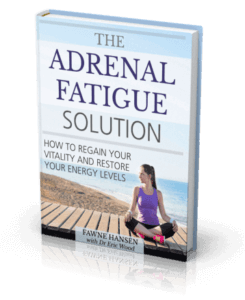Over the last few generations there has been a staggering amount of technological progress, but this has been accompanied by equally startling amounts of environmental change. The benefits of our technological advances are everywhere you look, but the pollutants and toxins that come with them have the potential to affect our wellbeing and good health.
Whether you are suffering from adrenal fatigue or are simply looking to improve your health, reducing your toxic load is an important step to take. If you are not conscious of where and how these toxins enter your life, you leave yourself powerless to avoid them. Left unaddressed, this can lead to health complaints like chronic fatigue and a weak immune system, as well as more serious conditions like heavy metal poisoning and more.
Many argue that there are ‘safe’ limits imposed on each of these chemicals by the FDA. When exposed to single chemical, this might be true. But when we are constantly assailed by large numbers of different pollutants, this argument no longer holds true. Hence the term ‘toxic load’, meaning that you should consider your overall exposure to toxic chemicals and pollutants, rather than simply focusing on a single one.
Chronic illnesses like adrenal fatigue have become increasingly common, and many doctors believe pollution to be a major factor in this. Here are a few of the many sources of toxins that you may be exposed to on a daily basis, along with some tips for reducing your exposure.
Airborne Pollution
Exogenous toxins are categorized as any pollutant whose source originates outside of the body, and this encompasses soil, air, water and also food borne toxins. Humans can consciously ingest exogenous toxins via the intake of alcohol, cigarette smoke and the use of both recreational and prescribed drugs, but there are also a number of unintentional ways for us to come in to contact with potentially harmful exogenous toxins. Heavy metals are a common culprit, specifically the mercury from a tooth filling or the lead content in traditional house paint. The ever-increasing presence of car exhaust fumes is a big contributor, with nitrogen dioxide, carbon monoxide and sulfur dioxide all harmful gases.
The solution? Start by avoiding air pollution as much as you can, using strategies like these:
- Avoid exercising in polluted areas.
- Stay inside on particularly polluted days – work from home if you can.
- Set your car fan to ‘recirculate’, to avoid bringing in the polluted air.
- Consider wearing a mask if you cycle outside or walk along very polluted streets.
Pesticides In Food
Although our big supermarkets now stock a pleasingly wide and varied array of fruits and vegetables, much of this diversity comes through the use of intensive farming techniques. The chemical cocktails used in farming can include fertilizers, fungicides, insecticides, weed killers and growth boosters. Though this process may help to meet the growing demand for produce, it takes a serious toll on our health. The US Environment Protection Agency recently revealed that several fungicides and herbicides are suspected of being the cause of various cancer strains in humans.
The solution? Organic produce has the advantage of being significantly less contaminated with pesticides.
Contaminated Drinking Water
Water may be absolutely essential for life, but the quality available to some can actually be enormously detrimental to their health. Just as in food, toxins can be found in water. Whilst nearly all sources of water can be at risk of harmful contamination, some are more susceptible than others. Research has shown that around fifty percent of nitrogen used by farmers remains within their soil, and is therefore able to filter into the water supply. Add in some chlorine and fluoride (both proven to be toxic to humans), and suddenly that glass of water doesn’t look so benign. In fact, a glass of drinking water directly from your kitchen tap can contain trace elements of up to one thousand different chemicals.
The solution? Get a good water filter for your drinking water. Additionally, you might consider filters for your showers, as the heat of the water releases chlorine gas. Even better, get a whole-house water filter to ensure that all the water you use is good quality.
Toxins Within The Home
Regardless of whether you keep your household spotlessly clean, there will always be toxins present. Many harmful indoor pollutants come in the form of dust, smoke, solvents, household cleaning products and treatments for wood and damp. Heavy metals, as mentioned above, are a prominent factor. The lead in traditional paint and the aluminum in pans are also factors. Household furnishings such as carpets, blinds and curtains can emit a harmful toxic gas called formaldehyde and other potentially dangerous organic compounds. Due to the way in which houses and other buildings used to be constructed, there is also an overwhelmingly high presence of asbestos throughout the country, a naturally occurring mineral that through prolonged exposure can cause a number of serious health problems including lung cancer and mesothelioma.
The solution? Make sure your home is frequently ventilated. Be sure to test for things like lead paint and asbestos before you do any home renos. Also consider switching from aluminum kitchenware to ceramic or glass alternatives.




There are so many ways to get polluted. This is why we need a good water filter to purify our drinking water. Thanks for the writing. It will be most helpful for sure.